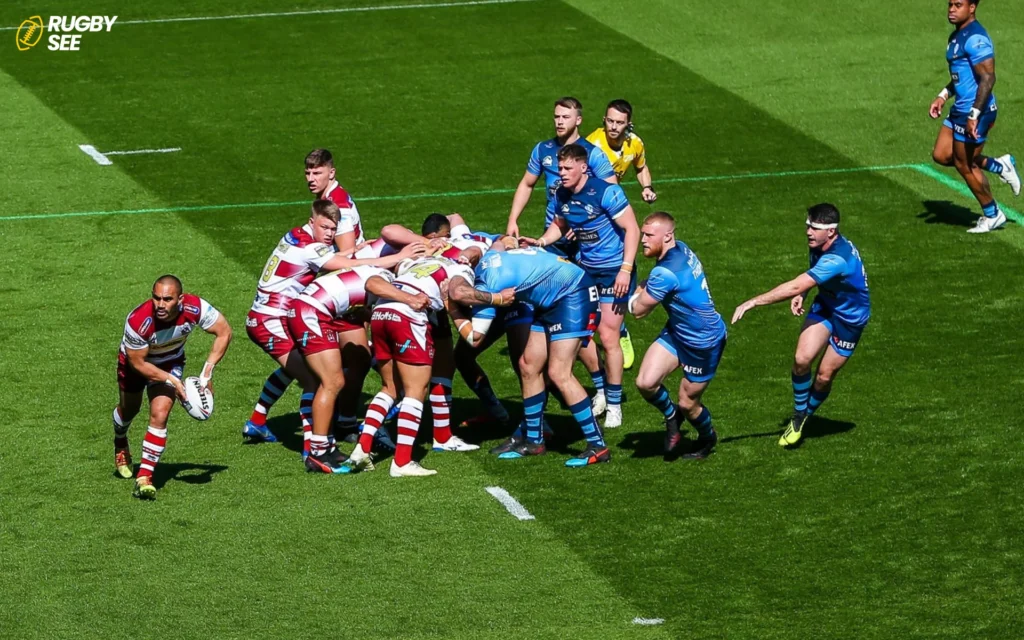In the high-impact world of rugby, player safety is paramount. Among the array of protective gear available to players, the scrum cap stands out as a distinct choice for some athletes. This article from Rugbysee looks at the reasons for using scrum caps in rugby and examines the benefits, misconceptions and their impact on player performance.
Understanding the Scrum Cap
A scrum cap is a form of headgear worn by rugby players to protect against cuts, abrasions, and to some extent, impacts. Made from thin foam, it covers the head and ears, fastened under the chin with a strap. Unlike the bulky helmets seen in American football, scrum caps are lightweight and designed to fit snugly, offering protection without significantly affecting the player’s hearing or peripheral vision.
The Purpose of Scrum Caps
1. Protection Against Cuts and Abrasions
The primary function of a scrum cap is to protect the head from cuts and abrasions. Rugby is a sport where physical clashes are frequent, and the scrum cap’s material helps reduce the risk of scalp lacerations and ear injuries. This is particularly crucial in the scrum, where players’ heads can come into close contact with opponents and teammates alike and if you want to know about getting in Shape for Rugby read How to get in shape for rugby.
2. Reducing the Risk of Cauliflower Ear
Cauliflower ear is a common concern among rugby players. It occurs when the ear suffers a blow, leading to a blood clot or other fluid building up under the skin. If untreated, this can lead to a deformation of the ear. The scrum cap’s coverage of the ears helps mitigate the risk of such injuries by cushioning impacts.

3. Comfort and Psychological Benefits
Beyond physical protection, scrum caps offer comfort and psychological advantages. For some players, wearing a scrum cap provides a sense of security that boosts confidence on the field. Additionally, in colder climates, the cap keeps the head warmer, which can be a comfort factor for players.
The Misconception About Concussion Prevention
It’s crucial to address a common misconception: scrum caps are not designed to prevent concussions. The thin foam layer provides minimal protection against the forceful impacts that can cause concussions. While they may slightly reduce the impact, the primary aim is to protect against superficial head injuries, not to absorb the significant forces that lead to brain injuries.
Who Wears Scrum Caps?
Scrum caps are worn by players in various positions, but they are more prevalent among forwards, particularly those in the scrum. The physical nature of their role, involving close contact and frequent engagement in scrums, rucks, and mauls, makes the protective features of the scrum cap especially appealing.
Personal Choice and Positional Demands
The decision to wear a scrum cap often comes down to personal preference and the specific demands of a player’s position on the field. Some players feel more comfortable and protected with the cap, while others prefer to play without it, citing reasons such as better heat dissipation and a preference for a less restricted feeling.
The Evolution of Scrum Caps
Over the years, the design and materials of scrum caps have evolved. Modern caps are more comfortable, breathable, and offer better moisture management than earlier versions. This evolution has made them more appealing to players, increasing their adoption across all levels of the sport.
The Role of Technology
Advancements in materials science have allowed for the development of scrum caps that provide improved protection while maintaining comfort. High-tech foam and breathable fabrics have replaced the heavier and less comfortable materials of the past, making modern scrum caps an attractive option for players seeking head protection.
Enhancing Player Performance with Scrum Caps
Beyond the protective aspects, scrum caps can also play a subtle role in enhancing player performance. The confidence boost that comes from feeling more protected can lead to players engaging more assertively in physical confrontations, such as tackles and scrums. This psychological edge, although difficult to quantify, is an important factor in the high-stakes environment of competitive rugby.

The Cultural Aspect of Scrum Caps
In rugby, tradition and culture play significant roles, and the scrum cap has become a part of this rich tapestry. For some players, wearing a scrum cap is a nod to the tradition of the sport, a symbol of the toughness and camaraderie that rugby embodies. It’s not uncommon to see seasoned players passing down their scrum caps to younger teammates, symbolizing the transfer of knowledge, experience, and spirit.
Customization and Identity
Scrum caps also offer a canvas for personal expression. With options for customization, players can choose colors and designs that reflect their personality or team allegiance. This aspect of identity and expression adds another layer to the significance of scrum caps in rugby, allowing players to stand out and express themselves while on the field.
Education and Awareness
As part of rugby’s commitment to safety, there’s an ongoing effort to educate players about the benefits and limitations of scrum caps. Understanding that scrum caps are designed to prevent certain types of injuries but not concussions is crucial for players and coaches. This education helps inform players’ decisions about wearing scrum caps and reinforces the importance of proper tackling techniques and other safety measures to protect against concussions and if you want to know about the rectangle On Rugby Shirts read What is the rectangle on the back of rugby shirts.
The Future of Scrum Caps in Rugby
Looking ahead, the future of scrum caps in rugby seems secure. As research into sports injuries and protective gear continues, it’s likely that scrum caps will see further advancements in materials and design. These improvements could enhance their protective qualities and comfort, encouraging wider adoption among players.
Moreover, as awareness of sports-related injuries, particularly concussions, grows, the role of protective gear like scrum caps in prevention strategies becomes even more significant. While the primary focus will always be on teaching safe playing techniques, scrum caps will remain a valuable tool in the player’s safety arsenal.

The use of scrum caps in rugby highlights the sport’s commitment to player safety. While not a mandatory piece of equipment, the scrum cap serves as an important protective tool for those who choose to wear it, offering protection against specific injuries common in rugby. The decision to wear a scrum cap is a personal one, influenced by a player’s role, comfort preferences, and the psychological benefits of feeling more protected.
As rugby continues to evolve, so too does the equipment designed to keep players safe on the field. The scrum cap, with its blend of protection, comfort, and psychological benefits, remains a popular choice for many in this physically demanding sport. Whether for the forwards bracing for impact in the scrum or any player looking to guard against cuts and abrasions, the scrum cap is a testament to rugby’s ongoing efforts to balance the physicality of the game with the well-being of its players.










